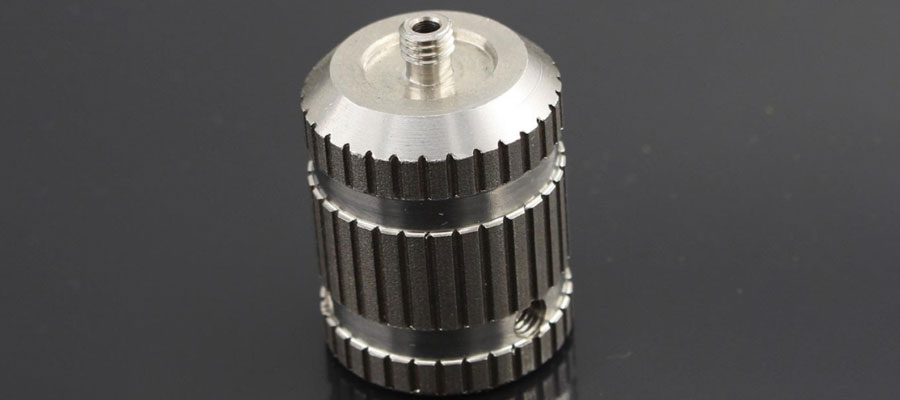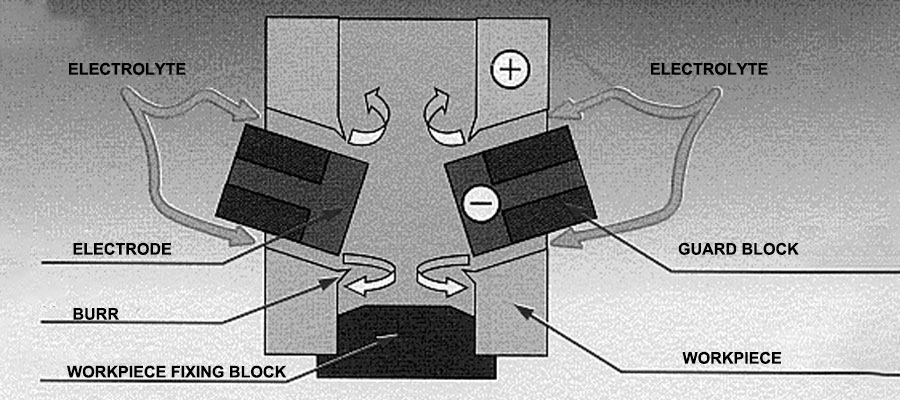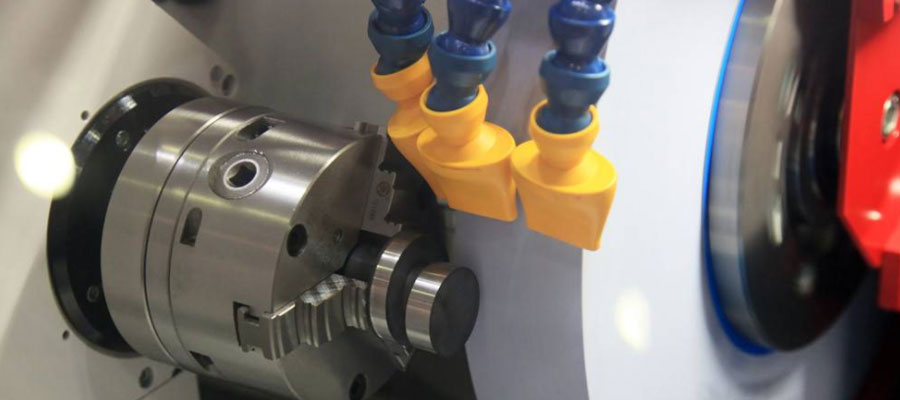What Is A Burrs?
| Burr – refers to the extrusion deformation of metal materials during processing. An extra iron scrap generated at the edge of the product, commonly known as flash, is formed during cutting, grinding, milling, and other similar chip processing. of. |

1. The ubiquity and harmfulness of burrs
Burrs are inevitable products of metal processing and are difficult to avoid completely. The existence of burrs not only affects the appearance of the product, but also affects the assembly and use performance of the product, accelerates the wear between the devices, and reduces the service life. With the development of high technology and the improvement of product performance, the requirements for product quality are becoming more and more strict, and the removal of burrs of mechanical parts is becoming more and more important. The existence of burrs has a great impact on product quality and product assembly, use, dimensional accuracy, and shape accuracy. Seriously, the entire product is scrapped and the entire machine cannot be operated.
2. How to remove burrs?
So far, the method of solving the burr: only after the end of the product processing, increase the process of removing the burr. There are two main types of methods for removing burrs: chemical removal and physical removal. Chemicals are mainly used for precision core workpieces with complex shapes, deformities, high precision requirements and high cost performance. The physical class is used for parts with rough surface and low dimensional accuracy requirements that are easy to remove by manual operation.
The chemical deburring process is a soaking process that achieves the effect of removing burrs by soaking. The process originates from Germany. The process is widely used in automotive, aerospace, metal parts processing, etc. Suitable workpieces are generally automotive parts; stamping parts; oil pump nozzle parts; textile parts; gear parts; bearing parts; Devices; bearing parts; transmission parts; fasteners; CNC machining parts, etc., the process is mainly to use the difference between the burr and the structure of the workpiece itself, through the principle of vertical reaction, to achieve the effect of deburring. Our definition of burrs means that the thickness of the burr is less than 20 filaments, which has nothing to do with the height of the burr.
Compared with the traditional deburring, the process is far superior to the traditional process in terms of reliability, repeatability, stability and environmental protection; it is efficient and time-saving, improves the surface finish of the product, is safe and reliable, and is environmentally friendly. The operation is simple and can enhance the anti-corrosion and anti-corrosion ability of the product.
Physical deburring mainly includes: coarse (hard contact) cutting, grinding, boring, scraping, general grade (soft contact), abrasive belt grinding, grinding, elastic grinding, polishing and processing, and other different degrees of automation. Craft. The quality of the workpiece being processed is often not guaranteed; production costs and personnel costs are very high.
When choosing a deburring method, we should consider various factors, such as the material properties, structural shape, size and precision of the parts, paying particular attention to the effects of surface roughness, dimensional tolerances, deformation and residual stress.

3. Let’s see what netizens are saying about glitch!
Netizen 1: The electrolyte in the electrolytic deburring has certain corrosiveness, and the workpiece should be cleaned and rust-proofed after deburring. Electrolytic deburring is suitable for removing burrs of concealed parts or complex shaped parts in parts, high production efficiency and short deburring time. This method is suitable for gears, splines, connecting rods, valve bodies and crankshaft oil passage orifices. Such as burrs, as well as rounded corners and so on. The disadvantage is that the attachment of the burr of the part is also subjected to electrolysis, and the surface will lose its original luster and even affect the dimensional accuracy.
Netizen 2: Glitches, people who have struggled in the metal industry must be familiar with it. In the processing of metal products, it is ubiquitous. No matter how advanced precision equipment you use, it will be produced along with the products.
Netizen 3: Manual deburring method: 1. Prepare tools such as parts and alloy files to be deburred. 2. Hold the file with your hand and touch the edge of the burr. Tilt 5-10 degrees. The surface will be scratched easily. If the angle is too large, the edge will be chamfered. 3. Use a little force to grind the burrs and complete the deburring of the entire part in a certain order, such as front and back. 4. Check if the burrs are removed.
Netizen 4: The so-called burr, mainly the plastic deformation of the material and the extra iron filings generated at the edge of the processed material, especially the material with good ductility or toughness, is particularly prone to burrs, and the problem of burr is One of the challenges that the metalworking industry has so far failed to solve.
Netizen 5: An electrolytic processing method for removing burrs of metal parts by electrolysis, that is, placing the tool cathode (usually brass) in the vicinity of the burr of the workpiece, which is separated by a certain gap (generally 0.3-1) Mm). The conductive portion of the tool cathode is aligned with the burr edge, and the other portions are covered with an insulating layer to concentrate the electrolysis on the burr portion. During processing, the workpiece cathode is connected to the negative pole of the DC power supply, and the workpiece is connected to the positive pole of the DC power supply A low pressure electrolyte (typically sodium nitrate or aqueous sodium chlorate) with a pressure of 0.1-0.3 MPa flows between the workpiece and the cathode. When the DC power is turned on, the burr is dissolved and removed, and is carried away by the electrolyte.
Netizen 6: After washing, the surface after grinding, although it looks very flat, in fact some of the more prominent sharp protrusions are not ground, but are bent and flattened on the surface of the part. Under the bent tip, a lot of closed space is covered, and it is inevitable that water and air will be contained in these spaces. The moisture in the confined space causes the air to rust, and under certain conditions, the confined space is re-expanded. This is an important cause of corrosion and uneven peeling of the coating or other protective layers after a period of time. The Cullygrat process, through the reaction of the syrup with the parts, acts perpendicular to the surface, thus fundamentally avoiding the generation of confined spaces. Moreover, by improving the finish, the ability of the surface of the part to withstand the load is also significantly improved.
Link to this article: How to remove burrs from machining
Reprint Statement: If there are no special instructions, all articles on this site are original. Please indicate the source for reprinting:https://www.cncmachiningptj.com/,thanks!
 PTJ® provides a full range of Custom Precision cnc machining china services.ISO 9001:2015 &AS-9100 certified. 3, 4 and 5-axis rapid precision CNC machining services including milling, turning to customer specifications,Capable of metal & plastic machined parts with +/-0.005 mm tolerance.Secondary services include CNC and conventional grinding, drilling,die casting,sheet metal and stamping.Providing prototypes, full production runs, technical support and full inspection.Serves the automotive, aerospace, mold&fixture,led lighting,medical,bicycle, and consumer electronics industries. On-time delivery.Tell us a little about your project’s budget and expected delivery time. We will strategize with you to provide the most cost-effective services to help you reach your target,Welcome to Contact us ( [email protected] ) directly for your new project.
PTJ® provides a full range of Custom Precision cnc machining china services.ISO 9001:2015 &AS-9100 certified. 3, 4 and 5-axis rapid precision CNC machining services including milling, turning to customer specifications,Capable of metal & plastic machined parts with +/-0.005 mm tolerance.Secondary services include CNC and conventional grinding, drilling,die casting,sheet metal and stamping.Providing prototypes, full production runs, technical support and full inspection.Serves the automotive, aerospace, mold&fixture,led lighting,medical,bicycle, and consumer electronics industries. On-time delivery.Tell us a little about your project’s budget and expected delivery time. We will strategize with you to provide the most cost-effective services to help you reach your target,Welcome to Contact us ( [email protected] ) directly for your new project.
Link to this article:How to remove burrs from machining
Reprint Statement: If there are no special instructions, all articles on this site are original. Please indicate the source for reprinting.:Cut Wiki,Thanks!^^
